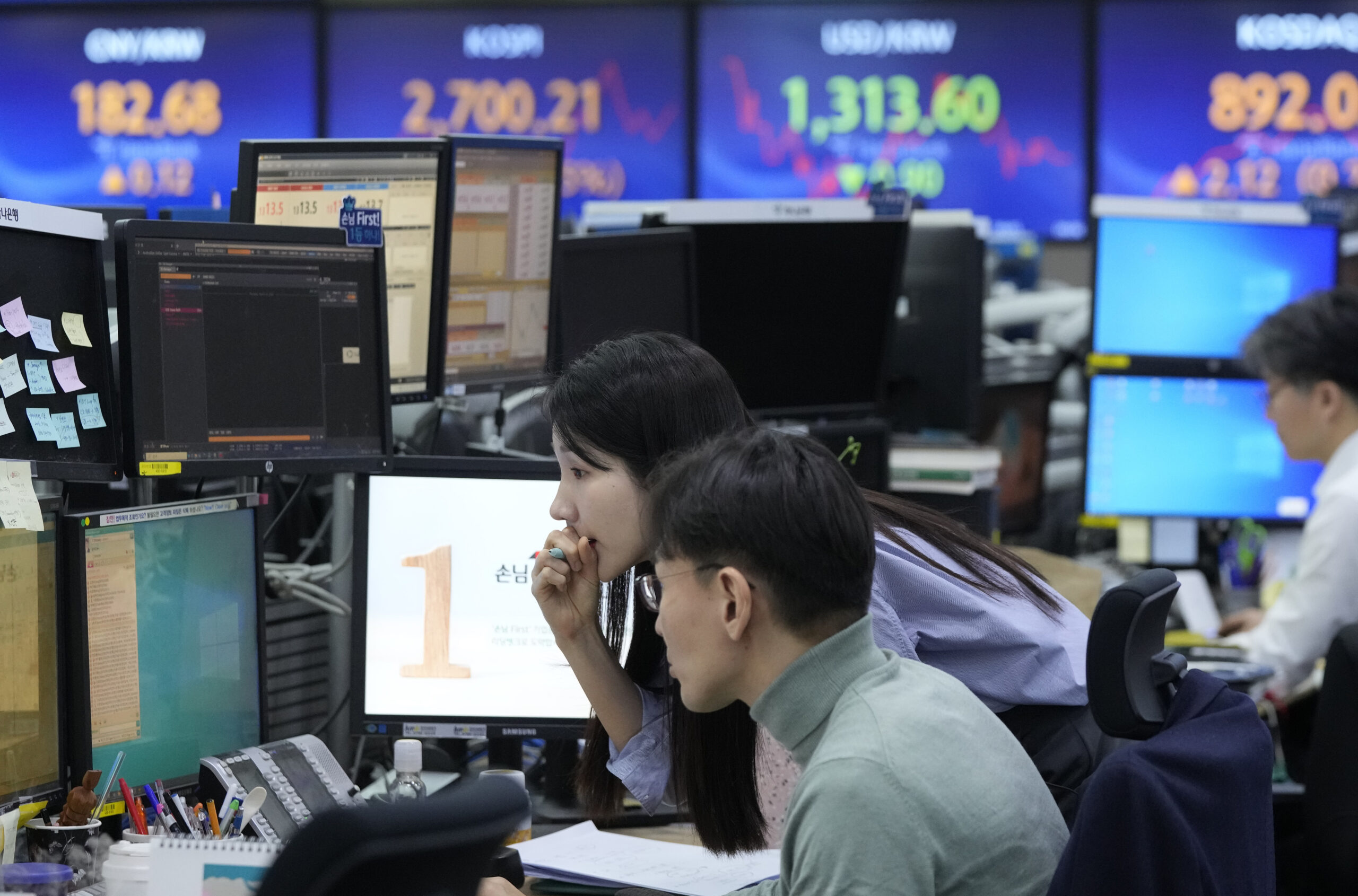TOKYO (AP) — Asian shares mostly declined Thursday in lacklustre trading after US stocks drifted to a mixed finish.
Japan’s Nikkei 225 shed 0.2 per cent in morning trading to 38,625.22. Nissan Motor Co. stock jumped 2.3 per cent after an unconfirmed Japanese media report that the automaker behind the Leaf electric car was about to enter an agreement on EVs with domestic rival Honda Motor Co. Honda issues rose nearly 1.0 per cent.
Nissan declined comment, while Honda did not respond to a request for comment.
Sydney’s S&P/ASX 200 slipped nearly 0.2 per cent to 7,716.50. South Korea’s Kospi added 0.7 per cent to 2,711.48. Hong Kong’s Hang Seng lost 0.4 per cent to 17,010.59, while the Shanghai Composite stood virtually unchanged at 3,044.17.
“In a significant turn of events, there’s increasing speculation that the Bank of Japan might consider ending its negative interest rate policy in its upcoming meeting, spurred by substantial wage hikes by major Japanese firms,” says Anderson Alves at ActivTrades.
The Japanese central bank has a target of achieving 2 per cent inflation. The Bank of Japan will hold a two-day monetary policy meeting next week.
On Wall Street, the S&P 500 slipped 9.96 points, or 0.2 per cent, from its all-time high set a day before to 5,165.31. The Dow Jones Industrial Average rose 37.83, or 0.1 per cent, to 39,043.32 and pulled within 90 points of its record set last month. The Nasdaq composite dipped 87.87, or 0.5 per cent, to 16,177.77.
The bond market was also relatively quiet, with Treasury yields ticking higher, while stock markets abroad were mixed after making mostly modest moves.
Oil prices have been on a general upswing so far this year, which has helped keep inflation a bit higher than economists expected. That higher inflation has in turn dashed Wall Street’s hopes that the Federal Reserve could start offering relief at its meeting next week by cutting interest rates.

But the expectation is still for the Fed to begin cutting rates in June, because the longer-term trend for inflation seems to remain downward. The Fed’s main interest rate is at its highest level since 2001, and reductions would release pressure on the economy and financial system. Stocks have already rallied in part on expectations for such cuts.
Their nearly nonstop run since late October, though, has raised criticism that it was overdone. The US stock market was recently looking more expensive than it has in 99 per cent of its history by a measure that looks at prices versus long-term earnings for companies, according to Jeremy Grantham, co-founder of investment company GMO.
The famed investor, who has a reputation for being cautious but also correctly predicted the popping of prior bubbles, says the long-run prospects for the broad United States market “look as poor as almost any other time in history.”
“The simple rule is you can’t get blood out of a stone,” he wrote in a recent report. “If you double the price of an asset, you halve its future return.”
On Wall Street, where the S&P 500 has jumped 44 per cent since hitting a bottom in 2022, Dollar Tree tumbled 14.2 per cent after reporting weaker results for the latest quarter than analysts expected.
Traffic increased at its stores, but it said customers bought less at each purchase than they did a year ago. The company also said it will close about 600 of its Family Dollar stores in the six months through early August.
On the winning side of Wall Street was Williams-Sonoma, which jumped 17.8 per cent and increased its dividend 26 per cent. Stocks of energy producers were also strong, benefiting from the rise in oil prices.
A majority of stocks in the S&P 500 ended up rising, but the index was weighed down by losses from some Big Tech behemoths and other influential members. Nvidia slipped 1.1 per cent and was one of the strongest forces pulling the S&P 500 lower.
In the bond market, the yield on the 10-year Treasury rose from 4.15 per cent late Tuesday to 4.18 per cent on Wednesday. It helps set rates for mortgages and loans for all kinds of companies and other borrowers.
The two-year Treasury yield also climbed. It more closely follows expectations for the Fed, and it rose to 4.62 per cent from 4.58 per cent late Tuesday and from 4.20 per cent at the start of February. It had earlier dropped on strong expectations for coming cuts to interest rates by the Fed.
In energy trading, benchmark US crude added 12 cents to USD79.84 a barrel. Brent crude, the international standard, rose 14 cents to USD84.17 a barrel.
In currency trading, the US dollar rose to JPY147.83 from JPY147.74. The euro cost USD1.0947, down from USD1.0953.






